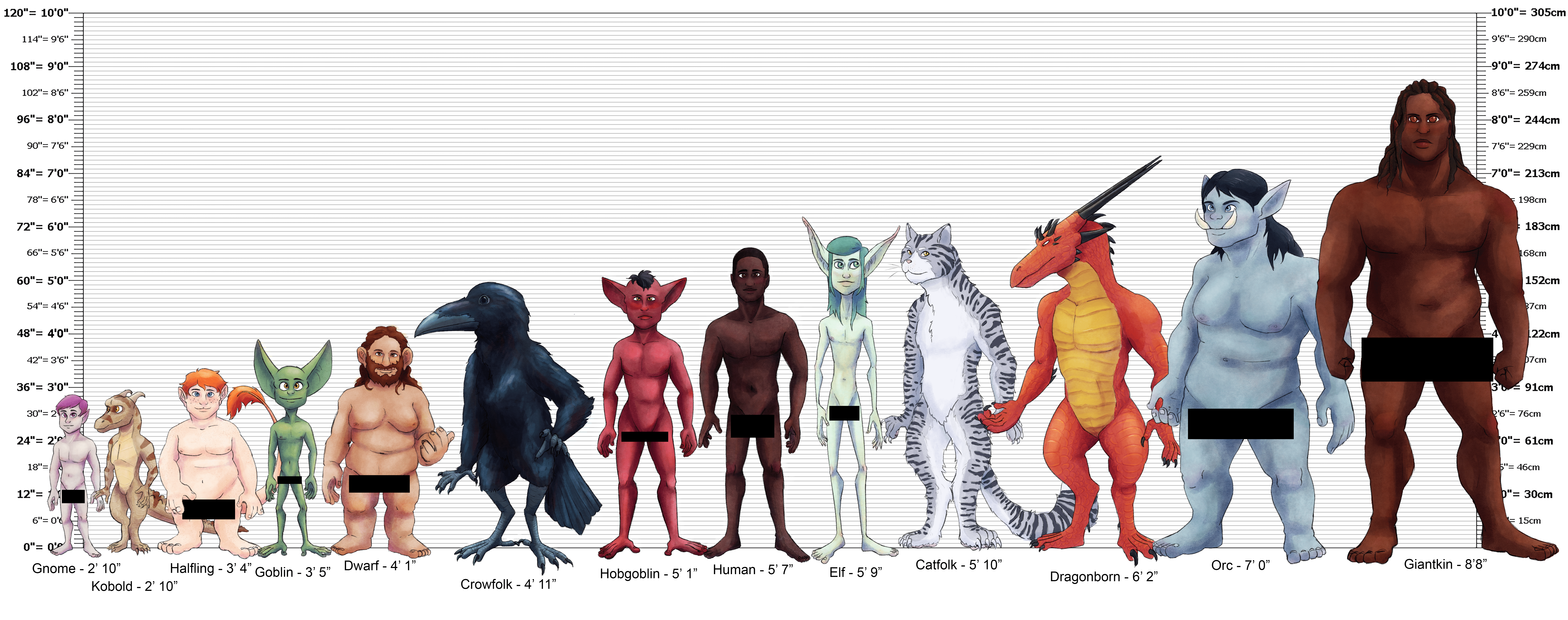Catfolk
The catfolk have been inhabitants of Ferlausen since ancient times, and despite being heavily outnumbered by humans, dwarves, and halflings, they have left their mark and been a major cultural influence in many parts of the world. These humanoid, bipedal felines walk with the nobility of a lion, the grace and agility of a leopard, and the unbearable smugness of a housecat who knows its humans are wrapped around its little paw.
The origins of catfolk, like those of humans and dwarves, are somewhat murky, simply because of how long the catfolk have been a part of Ferlausen. However, two accepted theories have risen in prominence. One theory suggests that catfolk are the descendants of the earliest cat familiars, who were changed by their newfound intelligence and exposure to magic into upright forms. Another states that catfolk are descended from the intelligent cats of the Feywild, who enchanted themselves into humanoid forms in order to interact more easily with the other races of Ferlausen. Some people believe that both of these origins could be true, and that they feed into one another.
Catfolk are by nature deeply curious, and many love to study and explore the world around them. It is not unusual for families of catfolk to travel together, exploring distant lands and exotic locales, sampling foreign cuisine and bringing back knick knacks and trinkets as mementos of their travels. Because they are ready and willing to spend money on such excursions, most other races happily welcome catfolk visitors and invite them to return again and again.
Several catfolk empires have existed throughout Ferlausen's history, and there are many old ruins and relics left from these civilizations, depicting catfolk as rulers, heroes, and even being worshiped as gods. Some of Ferlausen's oldest known historical artifacts are depictions of catfolk interacting with humans - indicating that their origins are very ancient, indeed.
Basic Information
Anatomy
Catfolk are tall, bipedal humanoids with catlike legs and faces. They are digitigrade, covered all over their bodies in fur, and most have long tails which are used as counterbalances and can often also indicate a catfolk's mood. All of a catfolk's four paws end in sharp claws - the ones on their upper limbs are retractable. This makes catfolk excellent climbers.
Female catfolk are noticeably taller than males, although they are also often slimmer and less muscular than male catfolk. Their breasts are rarely visible except when actively breastfeeding, and they often have multiple pairs of breasts. Male catfolk are usually compact and muscular, with thick, solid core muscles and strong limbs.
Growth Rate & Stages
Catfolk usually give birth to 2-3 infants at a time. Young catfolk, usually referred to as kits or kittens, are born blind and with very little fur, and require constant care from their parents. After about a month, kits can open their eyes, and full fur coverage generally grows in by about six months, although the kits do not begin walking until about a year old. Overall, catfolk grow and age at about the same rate as human beings.
Dietary Needs and Habits
Catfolk are hypercarnivores, with a healthy diet consisting of about 70-80% meat. Although they can and do ingest non-meat foods, including fruit, vegetables, and grains, their metabolism is such that they cannot live on a fully - or even mostly - vegetarian diet. Because of this, most catfolk societies revere and celebrate hunters.
Civilization and Culture
Interspecies Relations and Assumptions
Catfolk are often extremely popular among the other races, as many catfolk are travelers who enjoy exploring other parts of the world, and are perfectly happy to spend their money on food, accommodations, and local guides. They have also been major influences in the histories of most other races, and their resemblance to lovable and useful pets makes them very popular.
Average Height
5' 10"
Average Weight
218 lb
Body Tint, Colouring and Marking
Catfolk come in a huge variety of colors and coat patterns, including black, white, gray, brown, orange, red, tan, yellow, and cream. Their coats may be striped, spotted, whorled, piebald, or a mixture of the above. Some catfolk families look distinctly like a species of large wild cat - for example, lions or tigers.



Comments